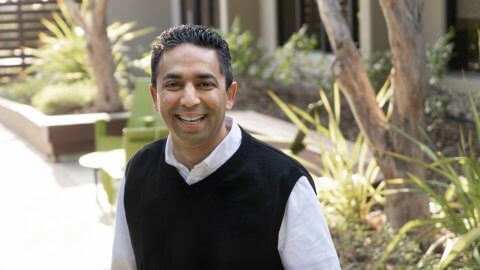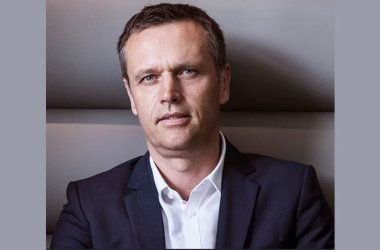CNME Editor Mark Forker managed to secure an exclusive interview with newly-appointed Automation Anywhere CIO, Yousuf Khan, to find out more about his new role and how the software giant has positioned itself as the global leader in the RPA space.

Congratulations on your recent appointment as the new CIO of Automation Anywhere. Can you outline to us what your primary goals and responsibilities will be in your new position?
I’m excited to have joined Automation Anywhere. The company has grown exponentially to become a leader in the RPA space, and I’m honored to be part of the executive leadership team. This is my fifth time, as the first CIO of a company, and therefore my first few weeks has really been focused on establishing more governance around the IT function.
I am going to be focusing on building on an existing foundation. We’re lucky to have SalesForce as a key partner of ours, so continued development on this platform will be a major focus, as well as an emphasis on corporate information security and infrastructure. I’m also focused on using some of our own software bots internally to improve end-to-end business efficiency internally.
The traditional role of a CIO has evolved. How would you describe the evolution of a CIO, and what have been some of the biggest challenges you’ve faced in grasping the new responsibilities a CIO must undertake to deliver transformation?
Over the last few years, the biggest change that has taken place is that CIO’s are now getting more and more aligned with the core business of the company. Specifically, CIO’s are now focused on improving customer experiences. Secondly, the CIO is more involved in revenue generating activities by unlocking innovation from key platforms like SalesForce and complementing their go-to market teams by delivering on an analytics strategy.
Currently, the biggest challenge faced by any CIO is to leverage emerging technologies that will help make the business relevant and stay competitive in the market. Maintaining a stable and highly scalable infrastructure that will meet the current and future business needs of an organization is critically important for the business.
CIOs are facing significant challenges when it comes to being complaint with cyber security norms, and that requires additional consolidation of data and advanced monitoring and reporting. Lastly, CIOs today need a considerable number of qualified and experienced professionals in the fields of emerging technologies like AI / ML / predictive analytics IOT, however the industry is facing a challenge to find suitable talent that will help fuel the CIO team.
Source: https://www.cioadvise.com/blog/top-challenges/
Automation Anywhere is a global leader in Robotic Process Automation. In your opinion, what is it that ultimately differentiates the company from its market rivals?
We offer the world’s only web-based and cloud native intelligent automation platform combining RPA, artificial intelligence, machine learning and analytics right out of the box, to help organizations rapidly start and scale their process automation journey. Automation Anywhere Enterprise, our enterprise grade RPA platform, allows customers to dramatically increase their productivity, improve their customer experience and the level of their employee engagement. In short, our foundational Enterprise RPA platform, our AI products, IQ Bot™, and Bot Insight™ (a predictive analytics capability embedded into bots) are robust and scalable platforms for delivering an intelligent automation effectively across the globe.
It is common in the current climate for RPA platforms to offer AI capabilities, but they’re used as two separate entities. Can we expect to see RPA and process analytics becoming entirely infused with AI and Machine Learning in the next twelve months?
The reason why RPA and AI are used as two separate entities is because one is rule-based and the other is adaptive and predictive. With more and more advancement in our software, we can surely expect that AI and Machine learning-driven automation with eventually replace rules-based systems entirely.
Recently we have launched automationanywhere.com/products/discovery-bot that uses AI and machine learning to automatically capture and analyze user actions to uncover common, repetitive process steps as employees navigate between business applications. It then prioritizes automation opportunities by potential return on investment (ROI) and creates RPA bots to automate them – accelerating the process automation journey.
You’ve announced your aspirations to expand your operations in the Middle East? Why is now the right time for Automation Anywhere to attempt to penetrate the RPA market in the region?
The Middle East is one of our fastest growing geographies in IMEA and one of our most promising markets globally. Companies of different sizes across different industries in this region are already keen on deploying bots to help increase their business productivity.
Digital transformation continues to gain traction in the region, backed by several government mandates. These include the UAE Strategy for Artificial Intelligence (AI) that aims to make UAE the top region in artificial intelligence (AI) investments in key sectors, as well as Saudi Arabia Vision 2030, with an objective of expanding digital services to reduce delays and cut redundancies.
With our launch of the Middle East regional headquarters in Dubai back in July 2019, we’ve seen a strong demand for our RPA software and we’ve already helped several customers digitally transform in region, including Emirates NBD, Dubai Asset Management, and Network International.
What are your primary objectives and goals for 2020?
The CIO office has the overarching goal to demonstrate world-class deployments of Automation Anywhere technology as we continue to help customers globally build digital workforces and vastly improve productivity in the front and back offices. Besides expanding our customer base all over the world, we will continue to deliver world-class software internally, that means, we will deploy our own software bots, as many as 1,000 internally, to improve business efficiencies in-house.
Another major objective is to continue building a great team that will help further optimize our systems and processes aligned with our steady company growth in 2020.





